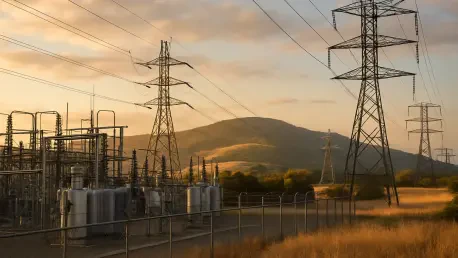As the energy landscape undergoes a monumental transformation, the reliability of power grids is in question, given the planned retirement of aging power plants. Recent evaluations reveal potential risks of blackouts and economic impacts due to outdated infrastructure. This analysis reveals a significant gap in adequate planning and forecasts a disconnect that could jeopardize the energy supply’s stability unless addressed.
Understanding the Current Power Plant Landscape
Today, the power sector is instrumental in fueling a growing aggregate demand across industries and communities. It comprises diverse segments driven by technological advances and regulatory mandates. Key players in this space work under stringent standards, adapting to energy transitions that align with reducing carbon footprints while meeting increasing demand.
The technological landscape privileges renewable sources as significant contributors, thus influencing utility operations and financial health. Regulatory bodies push for a transition towards clean energy, incentivizing the adoption of new technologies. However, the rigidity of some regulations can also stall innovation and infrastructure improvements, which are crucial for modernizing energy supply.
Current Trends and Projections in Power Generation
Emerging Technologies and Market Dynamics
Recent trends in power generation underscore a gradual shift toward integrating renewable energy sources like wind, solar, and battery storage. This shift is partly due to technological advancements that enhance efficiency and reliability. Additionally, evolving consumer behaviors demonstrate increasing support for sustainable practices, spurring market dynamics toward greener solutions.
While the adoption of renewable energy is rising, the market must also navigate demand fluctuations impacted by unforeseen economic activities and technological adoption rates. The interplay between emerging opportunities and consumer advocacy creates a compelling narrative where power generation must keep pace with technological advancements and behavioral shifts.
Growth Projections and Industry Outlook
Market analyses project robust growth trajectories within the power sector, driven by evolving technologies and infrastructure initiatives. Quantitative insights predict substantial investment in renewables, underlined by performance metrics indicating a promising future for sustainability and cost-effectiveness.
Performance forecasts reflect a broader industry shift, with data suggesting more than adequate responses to demand growth. Anticipated investments in plant upgrades and emerging technologies provide optimism; however, assumptions about potential stagnation in the field could obscure reality, pointing to the need for careful scrutiny of findings.
Challenges in Modernizing Energy Supply
Updating energy supply infrastructure faces several constraints, from outdated equipment to ambiguous regulatory requirements. Technological limitations present significant hurdles as they can delay the widespread adoption of efficient power sources. Moreover, economic factors complicate modernization efforts, such as resource allocation and funding challenges.
To overcome these challenges, strategic solutions emphasize innovation and cross-sector collaboration. Embracing modern technologies, streamlining regulatory procedures, and fostering partnerships are potential paths forward. Unlocking additional market potential involves aligning industry practices with technological breakthroughs, regulatory reforms, and market demands.
Navigating the Regulatory Environment
The regulatory milieu in the power sector can substantially impact operational efficiencies. Laws and standards establish compliance thresholds, influencing decisions around infrastructure investments and operational practices. Navigating this complex environment requires agility and foresight to minimize disruptions.
Ensuring compliance with regulatory measures offers a pathway toward sustainability and operational longevity. Security measures within the industry further dictate shifts in practices, and utility companies must balance these requirements with innovation propensities to ensure continued operations in a competitive landscape.
Future Directions in Power Sector Evolution
Technological advancements are set to reshape the industry’s future, positioning cutting-edge solutions as pivotal drivers for grid reliability. Data-driven insights signal potential market disruptors poised to redefine traditional power generation narratives. Continually evolving consumer preferences propel industry stakeholders to innovate in services and offerings.
The intricate interplay between global economic conditions, innovation, and consumer behavior shapes the sector’s trajectory. Realizing potential growth requires responsive strategies that cater to emerging opportunities while ensuring integrity in grid reliability and sustainability practices.
Conclusion and Industry Implications
The examination highlighted the perils inherent in relying on outdated power plants for future grid stability. Instead of keeping obsolete infrastructure online, significant investments in renewables and emerging technologies could better sustain reliability. Moving forward, encouraging openness to innovation, enhancing collaboration among regulators, utilities, and markets, and ensuring effective planning processes can serve as a catalyst for a dynamic and reliable power sector. Proactive measures supported by robust state and federal interactions could secure the power industry’s crucial role in advancing national energy goals.









